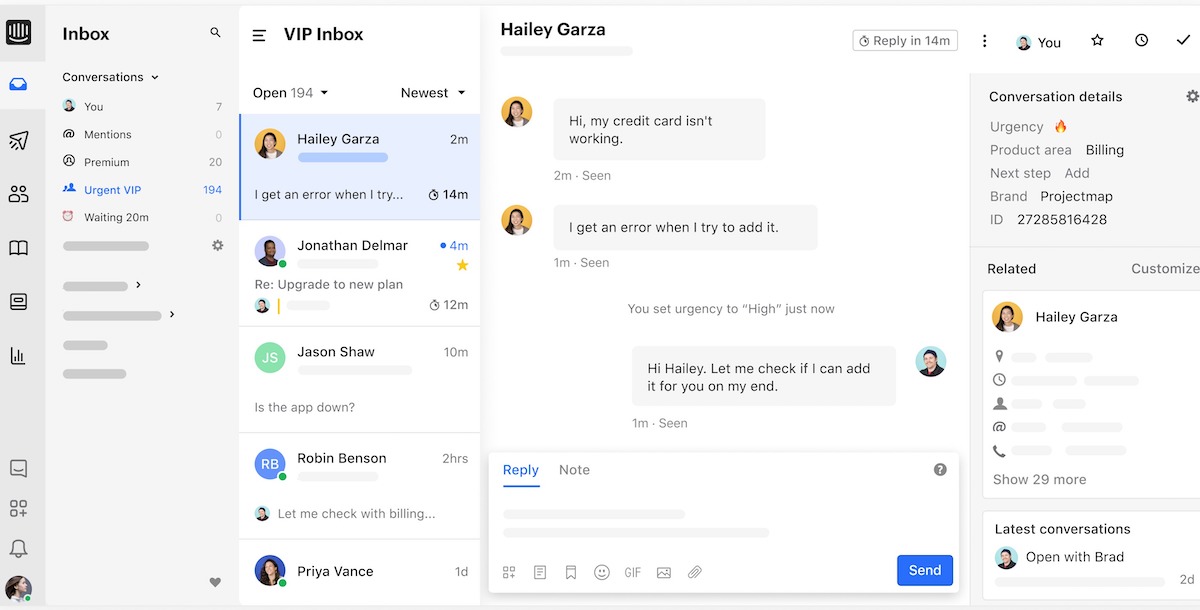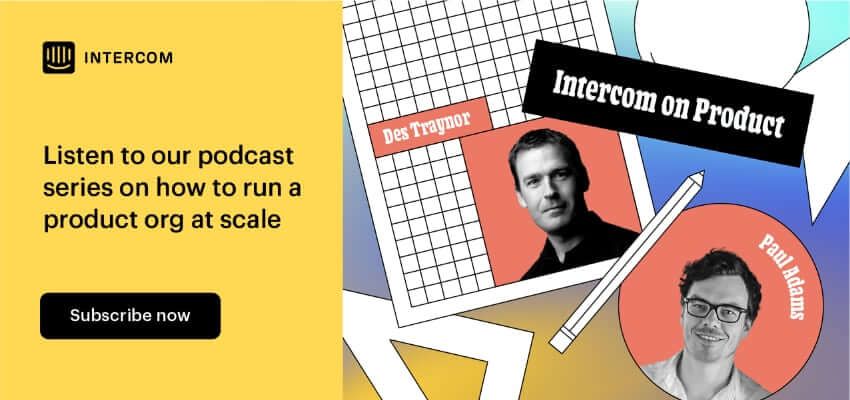
Supporting product launches: How to set up your customer service team for new announcements
On the Intercom Support team, we’re always experimenting with ways to offer our customers a better experience – whether that’s a faster response, a more helpful answer to a question, or just a more delightful interaction with our reps.
One such experiment took place last year in the run-up to the launch of our next-generation Inbox, when we chose to dedicate a team of specialists to handling questions specific to the new product. We’re going to dive into the idea, method, and results of our experiment; we hope it will help other customer service teams to think outside the box when it comes to product launches.
Starting with a cupcake
Here at Intercom, we call our little ideas and experiments “cupcakes” – small trials you carry out before taking on a larger project or adopting a major change (bake your cupcake so you learn how to bake your wedding cake). These cupcakes typically focus on how rethinking one part of a process can impact our team’s performance and productivity.
The next-gen Inbox represented a total rebuild and redesign of our core Inbox product. Given that support teammates spend most of their days in the Intercom Inbox, we anticipated that this particular launch would constitute a major change for our customers, and drive a lot of new conversations to our Support team. Our customers would want to learn more about the change, explore our new “keyboard-first” approach and shortcuts, and find their favorite features, both new and old.

Intercom’s next-gen Inbox
What did we do?
Intercom’s support reps are generalists that carry an enormous amount of product knowledge across a wide range of areas. For this crucial launch, we decided to choose eight teammates from our global team and form a “tiger team” of customer support specialists to staff a dedicated inbox to which we would automatically route all queries related to our next-gen Inbox.
A tenured support specialist who had been “on tour” with the Product team while they were developing the new Inbox – effectively acting as QA support – was able to invest several hours in putting together self-serve resources for our internal knowledge base, as well as delivering training directly to our “tiger team.”
“Choosing specific team members to manage this task meant that they could focus their time on one particular topic instead of their usual broader menu of subjects”
These eight teammates would take turns in daily shifts to monitor this inbox and respond to questions from our customers specifically related to our new Inbox. Each member of the tiger team would dedicate at least one full day of work towards staffing this inbox across the week of the launch.
What was our goal?
There were two primary reasons that we adopted a specialist over a generalist approach for our product launch:
We hoped that specialists could serve our customers better and faster during the launch
Our Support team had acted as beta testers for the next-generation Inbox before its wider release, becoming acclimated to a new way of providing support using Intercom – so they were well equipped to support our customers in their own journey. Choosing specific team members to manage this task meant that they could focus their time on one specific topic instead of their usual broader menu of subjects, and allowed them to become deeply familiar with this aspect of our product.
Ultimately, we hoped that this level of increased familiarity would lead to quicker handling time and higher CSAT, and allow our generalist support reps to maintain our high standards of service for customers with queries unrelated to the Inbox.
We wanted to identify trends in customer feedback
As well as analyzing the data behind our Inbox-related conversations, having a specialized group of support teammates focused on our new and improved Inbox allowed us to identify trends in customer feedback quickly and accurately. For example, the team was able to rapidly surface customer feedback requesting the return of pinned shortcuts in the Inbox composer, allowing the Product team to prioritize shipping this change.
Routing Inbox-related conversations
We automated the routing of these conversations using two methods:
- An inbound Custom Bot which we had set up to trigger for customers using our next-gen Inbox, where they could choose “product confusion,” “requesting a feature,” or “leaving feedback” as their reason for contacting.
- We used Inbox Rules to capture conversations including terms relating to the new Inbox, which were then routed to the dedicated inbox.
To ensure that nothing slipped through the cracks, we also asked teammates to manually reassign any Inbox-related conversations they pulled to this inbox.
“We saw our tiger team develop a high level of familiarity with the new Inbox, enabling them to deliver a greater standard of support to our customers”
The results
We iterated as we went. Initially, as our conversation volume increased significantly, we found that we needed to alter the schedule. We moved from scheduling one teammate in each region to two teammates in each region to handle this volume spike. Once we felt we had resourced effectively, we began to see benefits like:
High rates of customer satisfaction
We saw our tiger team develop a high level of familiarity with the new Inbox, enabling them to deliver a greater standard of support to our customers. We didn’t know what kind of score to expect for such a high volume of queries on a brand new product, and were pleased with the overall CSAT rating of 95.1% for conversations assigned to our dedicated inbox. We will continue to increase this score as the product knowledge is shared across the team.
Additionally, separating next-generation Inbox queries from our general conversation volume allowed the rest of our team to support our customers without getting bogged down in complex queries about a brand new product – and maintain our high standards of service.
“A huge benefit of this approach was the collaborative relationship we built with our Product team throughout the experiment”
Cross-functional relationships
A huge benefit of this approach was the collaborative relationship we built with our Product team throughout the experiment, allowing us to surface bug reports which were then prioritized and share product feedback which led to significant changes within the next-gen Inbox.
Not only did this benefit our customers, our tiger team, and our Product team during the launch, it also allowed the Support team to nurture its relationship with our Product team, strengthening existing communication processes for future launches and positioning our Support team as a vital source of product feedback.
We will continue to experiment
Our approach to the launch of our next-gen Inbox has informed how our Support team prepares for Intercom product launches and has prompted our Support Operations team to explore how we might roll out wider topic specialization among our support teammates.








